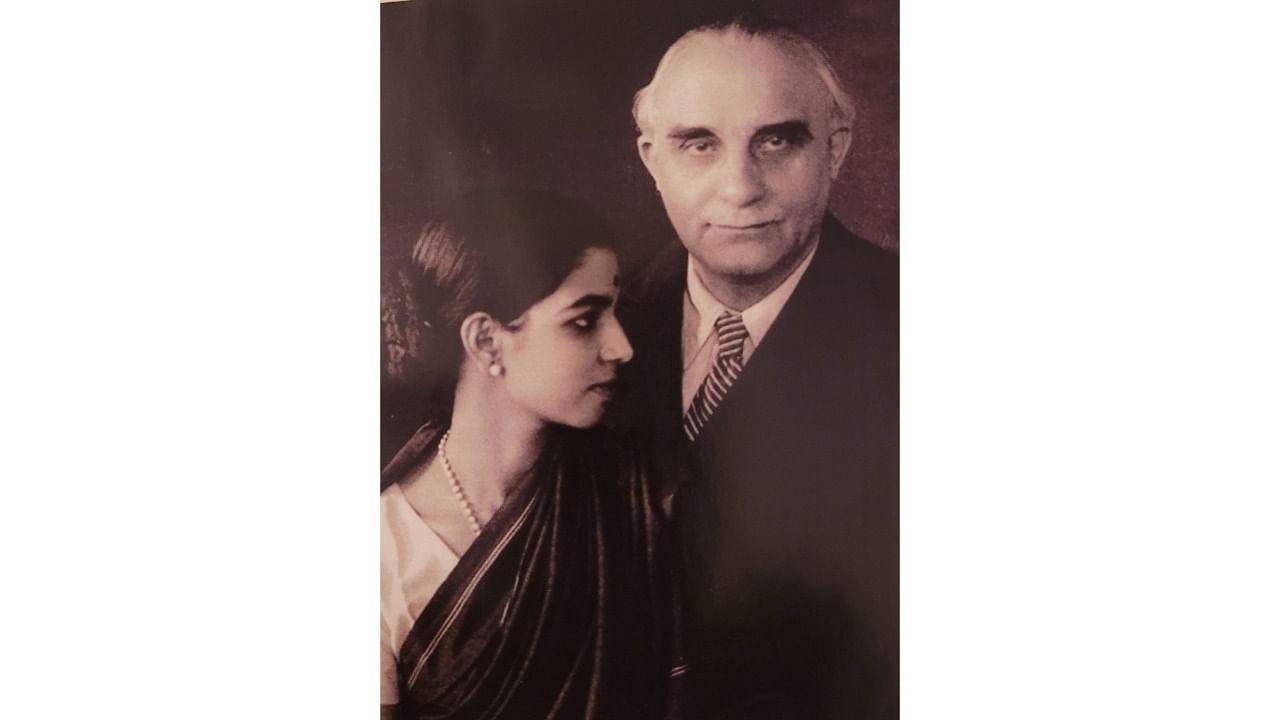
The Arundales.
Pic by special arrangement
“The name “World-Mother” was new to me when I first heard those words in 1925. I did not realise that such a Personage was worshipped in the West and did not understand the significance from the Western point of view. It is natural for me and many millions of Indians to worship the Goddess known in Sanskrit as Jagadamba — literally meaning “Mother of the World,” Rukmini Devi Arundale revealed in an interview.
Rukmini Devi, 21 years old in 1925, had been chosen to become the Jagadamba encouraged by her husband George Sydney Arundale. He had brought in messages from the masters and had given several spiritual initiations to Rukmini to prepare for the role.
On May 25, 1928, in the Netherlands, Rukmini was considered ready for initiation and a consecration ceremony was performed on her by Annie Besant. Rukmini knelt in front of Annie Besant who stretched her arms out, touched Rukmini’s head and turned her face upwards seeking the approval of the masters. Devi was added to Rukmini’s name after this consecration.
Rukmini, then only 24 years old, did not feel the inspiration to establish the League for Motherhood that her husband and Annie Besant envisioned. She later said “if I start an organisation, it will go dead if it is only my ideas instead of an inspired thing. I can’t do it.”
That a women’s rights activist such as Annie Besant, who had fought for pro-choice family planning at the turn of the century in Britain, considered this role of world mother so important is significant as also that a young Indian woman was chosen as the embodiment and ambassador of the divine. A group within the Theosophical Society’s Esoteric Section had attempted in the 1920s to create an organisation supporting rituals bringing forth the priestly qualities of women.
The World Mother Movement, which Annie Besant announced during this time, was intended as the female counterpart to the Order of the Star in the East (OSE) in which J Krishnamurti was assigned as the embodiment of the male part of the divine, the ideal world leader.
Rukmini understood that there was a political and sociological side to the world mother movement which underlined and emphasised the importance of women in public life in India. Her husband George Sydney Arundale fully supported her in this matter, recognising her potential to have more influence in other activities.
The prospect of a 16-year-old Brahmin girl, Rukmini’s marriage to George Sydney Arundale, 42, a Christian Bishop had caused a sensation. There were letters to the editor and editorials opposing the marriage. Rukmini said she was steadfast in her decision to marry him.
Rukmini’s elderly mother Seshammal was a strong support to the couple. Seshammal decided to move her entire family to Bombay to get the marriage registered in 1920. The family returned to Madras after the furore had died down. The major task assigned to young Rukmini was to embody all positive qualities of the feminine.
With her undauntable willpower, Rukmini Devi took to learning Bharatanatyam which was not available to the women of her community, a dance that even her father and several elite men had taken a pledge to not even witness due to its association with concubinage and amorous lyrics. A decision to start an institution to make the dance available to all was taken after her first performance received a tremendous response. Kalakshetra was born in 1936 in the space provided to it by the Theosophical Society.
Her challenges came when George Arundale died in 1945. Theosophical Society decided to dissociate with Kalakshetra and asked Rukmini Devi to move out. Kalakshetra had the Besant Theosophical School, the institute for fine arts that taught music, dance, and painting, arts and produced iconic dance dramas, the handloom and handicrafts section, the printing section and the Adyar Theatre. Undaunted, Rukmini, with the help of Doraiswamy Iyer, bought small pieces of land by the hot sandy beach of Thiruvanmiyur, a suburb of Madras and went about planting trees and converting the space into a green haven.
She was the first woman to enter the Indian Parliament as a nominated member of Rajya Sabha. She was instrumental in passing the Prevention of Cruelty to Animals Act of 1960. In March, 1962, the Animal Welfare Board of India was established by the government with Rukmini Devi Arundale as Chairman. She remained in that position almost continuously until she died in 1986. The Khadi movement led by M K Gandhi had turned India white during the freedom struggle. Rukmini brought in colour with her work of revival of handloom designs on sarees. She travelled to weaving villages, looking for old designs and her Kalakshetra sarees inspired the new Kanchi cotton saree designs.
From 1975 to 1986, Rukmini served as President of the Crafts Council of India, a non-profit organisation supporting the education of young people in traditional Indian crafts such as stone carving, pottery, and textiles providing guidance, advice, and encouragement.
Her attention to detail and dissatisfaction with anything less than what she had envisioned in her dance dramas and the training provided by Kalakshetra made tongues wag. Several unfounded accusations of appropriation, Sanskritisation, and sanitisation came her way but she carried on without any fear.
(V R Devika is the author of Rukmini Devi Arundale: Arts Revivalist and Institution Builder published recently by Niyogi Books.)